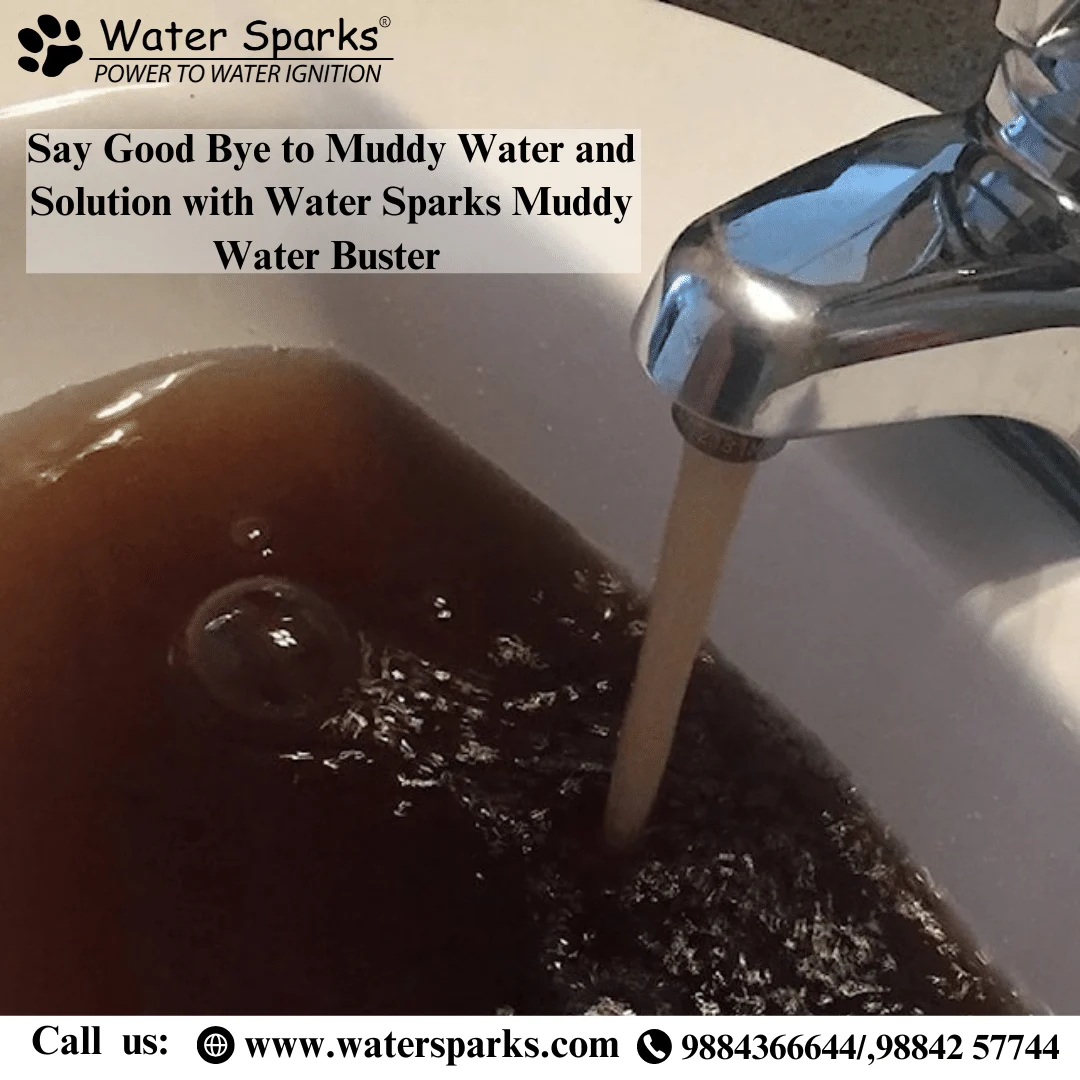Introduction
Muddy water is a global issue that affects millions of people, disrupting daily life and posing significant health risks. Whether in rural communities where water resources are scarce, or urban areas dealing with pollution, the presence of muddy water is a pressing concern. This blog will address the awareness surrounding muddy water, explore the causes, examine the detrimental impacts on human health and the environment, and introduce potential solutions. One key solution that is emerging as a game-changer is the “Water Sparks Muddy Water Buster,” a technology that holds promise for improving water quality and tackling the challenges of muddy water.

What Is Muddy Water?
Muddy water is simply water that contains suspended particles like soil, silt, clay, and organic matter. It’s often caused by natural events like storms or human activities like construction and industrial waste. Muddy water can appear brown or reddish-brown, making it visually unappealing, but more importantly, it can pose significant health risks if consumed or used for domestic purposes.
Causes of Muddy Water
Natural Causes:
Natural factors such as heavy rainfall, storms, or flooding can displace soil and debris from riverbeds, lakebeds, and land surfaces, which end up contaminating the water. Additionally, erosion in areas where there is little vegetation or loose soil is a major contributor to muddy water.Human Activities:
Human activities are often the root cause of muddy water. Urbanization leads to increased runoff from roads, construction sites, and agricultural land. Industrial activities such as mining, construction, and waste disposal can release a variety of pollutants into local water sources, contributing to the muddiness of water.Agricultural Runoff:
When rainwater washes pesticides, fertilizers, and sediments from farmlands, these substances enter rivers and lakes, often creating murky, polluted water. Agricultural runoff is a major concern, particularly in developing regions where improper land management practices are common.Deforestation:
Deforestation leads to soil erosion, which increases the amount of sediment carried into water bodies, resulting in murky water. The loss of tree cover reduces the soil’s ability to retain water and nutrients, which exacerbates the runoff problem.
Raising Awareness of Muddy Water
It is essential to raise awareness about the negative effects of muddy water, particularly in regions where it is a frequent problem. Education programs in communities can focus on:
- Understanding the causes of muddy water and how to prevent activities that contribute to water contamination.
- Promoting good agricultural practices such as minimizing the use of chemical fertilizers and pesticides and implementing soil conservation techniques to reduce runoff.
- Educating industries and construction projects on the importance of controlling sediment runoff and utilizing eco-friendly methods to manage waste and stormwater.
Solutions to Address Muddy Water
To address the issue of muddy water, a combination of technological, infrastructural, and community-based solutions must be implemented. Some promising solutions include:
Improved Water Filtration Systems:
New technologies in water filtration, such as ultrafiltration and reverse osmosis, have shown promise in removing suspended particles from water. However, these systems can be expensive and require regular maintenance. Developing affordable filtration systems for communities that rely on natural water sources is a priority for many organizations and governments.2. Water Sparks Muddy Water Buster:
One innovative solution to tackle muddy water is the Water Sparks Muddy Water Buster, a novel water treatment device that uses advanced technology to rapidly remove suspended particles from water. This device uses an electrocoagulation process to bind and remove pollutants from water, effectively reducing its turbidity. The technology is compact, energy-efficient, and easy to deploy in both rural and urban areas.The Water Sparks Muddy Water Buster can be deployed at both small and large scales. In small communities, it can provide a portable and affordable solution for clean drinking water, especially during floods or heavy rainfall when water sources are typically most contaminated. In larger cities, it can be used in conjunction with municipal water treatment plants to improve water quality.
Conclusion
Muddy water is a significant environmental and public health issue that requires collective action to address. From its causes to consequences, understanding muddy water’s impact is crucial for finding long-term solutions. Technologies like the Water Sparks Muddy Water Buster provide an effective method for treating contaminated water, and when combined with improved water management practices, they offer a viable path toward cleaner water for all. Raising awareness, engaging communities, and adopting sustainable practices are the key to ensuring access to safe, clean water for future generations.
